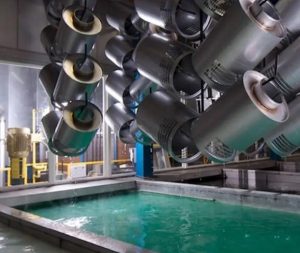Phosphate Coatings Pretreatment for Steel Substrates

Phosphate Coatings Pretreatment for Steel Substrates
The recognised pre-treatment for steel substrates just prior to application of powder is phosphating which can vary in coating weight.
The greater the conversion coating weight the greater the degree of corrosion resistance achieved; the lower the coating weight the better the mechanical properties.
It is therefore necessary to select a compromise between mechanical properties and corrosion resistance. High phosphate coating weights can give trouble with powder coatings in that crystal fracture can occur when the coating is subjected to locally applied mechanical forces, eg. bending or impact.
Due to the excellent adhesion of the powder coating to the phosphate coating, disbondment will usually occur at the phosphate/metal substrate interface rather than at the phosphate/powder coating interface.
Phosphate coatings are covered by BS3189/1959, Class C for zinc phosphate and Class D for iron phosphate.
A fine grain crystalline zinc phosphate is recommended at coating weights of 1-2g/m2 and for iron phosphate at 0.3-1g/m2. Application can be made by spray or dip. Chromate passivation is not usually necessary.
Iron phosphate coatings are normally spray applied in a three or four stage operation. The work usually passes through two water rinse sections before drying.
Zinc phosphate can be either spray or dip applied in a five stage operation, ie. alkali degrease, rinse, zinc phosphate, two water rinses.
It is essential that the workpiece after phosphating is powder coated as soon as possible after drying.
Phosphate Coatings Pretreatment

Comments are Closed